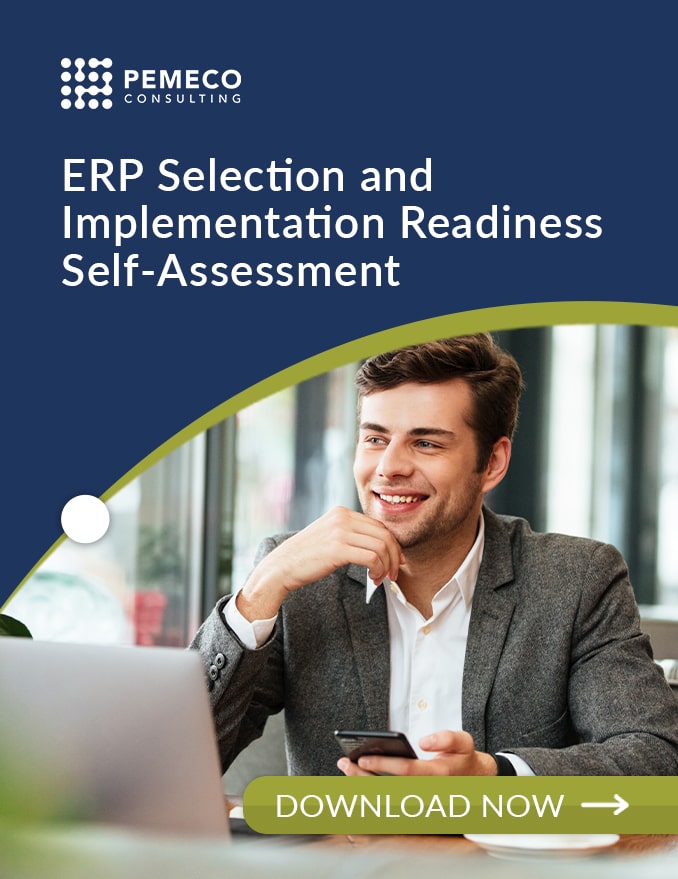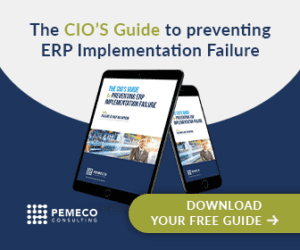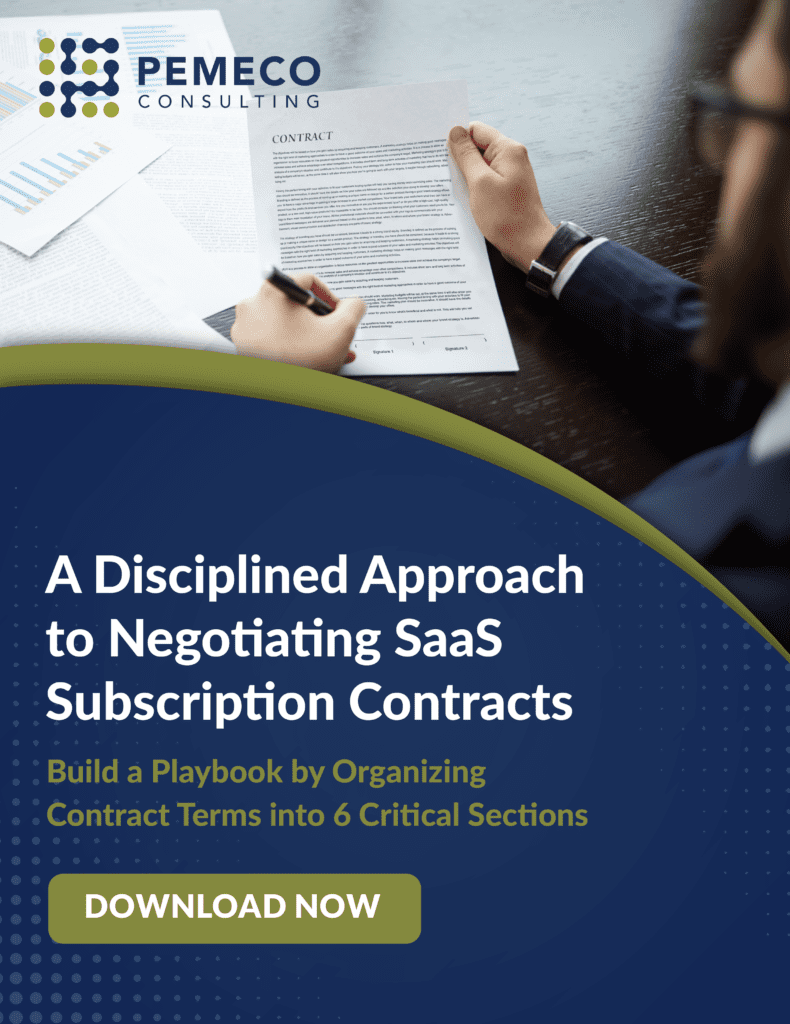If you’re a business owner or executive, you understand the need for integrated business processing. It’s essential to keep productivity in the workplace high, or risk operational inefficiencies. The good news is that implementing an enterprise resources planning (ERP) software system can provide the tools to improve business performance.
An ERP system can improve business productivity and efficiency through the automation of business processes and by transacting against a central data store.
According to various surveys and statistics, nearly 90% of companies believe that their ERP implementation is a catalyst for business success and nearly 50% credit ERP for improved business processing. Ultimately, improved business processing can improve customer service levels, supply chain management, and profitability.
However, ERP implementation is complex, and implementation success is not easily achieved. Various studies report that between 50% and 75% of ERP implementations are considered failures (read a summary here). According to global consultancy McKinsey (read here), 75% of ERP implementations fail to meet schedule and budgetary targets and 65% yield a negative return-on-investment.
What exactly is ERP, and how do you successfully implement ERP for your business? This article will tell you what you should know. Read on below to learn more.
ERP Fundamentals for Executives
The ERP system is a suite of software that helps automate and integrate a business’ functions, such as accounting, sales, engineering, manufacturing, supply chain, and human resources. A business’ central database connects functions and people across the company, transacts against a common dataset, and provides the analytical tools to support timely decision-making. In a nutshell, ERP is fundamentally designed to deliver two overarching capability sets:
- Planning: This refers “resource planning” part of the “enterprise resource planning” name. ERP is intended to be an integrated operational planning suite that takes all sources of demand, all sources of supply, and generates suggestions on what to buy, what to make, and what to service. All of the various operational modules (sales, purchasing, inventory, manufacturing, service resources, etc.) should tie into a central and integrated planning engine.
- Integrated cost and financial accounting. The “E” in “enterprise resource planning” is intended to take all of the operational transactions and integrate them into the general ledger through various subledgers. Every transaction (e.g. a purchase order receipt, service work order posting) should be mapped to the proper general ledger accounts and automate the postings. This imposes accounting controls and ensures that the books accurately represent the state of operations.
ERP Implementation and Why It’s Challenging
Fundamentally, implementing ERP typically requires wholesale changes to data structures and business processes. And, because the processes are so deeply tied together electronically, it becomes critical that these processes flow seamlessly and as intended across operational and accounting functions. ERP touches almost every aspect of the business, and this is what makes it so hard to implement. If you don’t properly set up the purchase order for example, you won’t be able to properly receive the purchased goods into the warehouse nor pay the supplier.
Successfully implementing an ERP system demands a multi-phased disciplined project that involves mapping new business processes, configuring the software, testing the new set-ups, migrating restructured company data, and training everyone to use it. The process can take anywhere from a few months to many years, depending on the company’s size and complexity. You need experienced project managers and solutions architects, dedicated employees, and skilled consultants to deliver a successful project.
The hard work continues once you go live on a new system – that’s when you need to hold your end-users’ hands to make sure that they adopt the new systems and processes, which often includes radical changes to the way they work.
The Challenges of ERP Implementation
At their core, ERP implementations are change management projects. And, each project requires negotiation and management of the predictable Emotional Curve. Here are a few common ERP implementation challenges:
1. Project Management
Implementing an ERP system has different stages: planning, design, data migration, testing, training, deployment, and hyper-care support. Each phase brings about a myriad of tasks, and all have to be effectively managed. Different ERP vendors and systems integrators bring a different methodology with different strengths and weaknesses. It’s important that you apply a ERP project management methodology that has a proven track record of delivering successful implementations.
2. Team Involvement
Because ERP projects go to the heart of your data and business processes, it’s critical that you dedicate sufficient internal personnel time to map, test, and train. You don’t want to outsource the structure of your business operations to consultants that may know the software but don’t know the idiosyncrasies of your business. You should plan to dedicate a core team of subject matter experts to the project for between 50% to 75% of their working time.
3. Data Migration
An ERP system is a single source of all company-related information. It’s critical that the data structures be properly defined and data be clean and accurate. Failure to do so can lead to potentially disastrous consequences, as it did to Canadian airline Westjet. Read more about data migration best-practices here.
4. Training
With all of the focus on business processes, automation, and data, it’s easy to forget that people are at the heart of an ERP project. People need to get data into the system, transact in the system, and use the system efficiently. You should consider two distinct sets of training: core team training and end-user training.
It’s important to train the core ERP implementation team so that they are sufficiently well educated to configure and test the system. You can learn about core team training here.
As you move to the latter stages of ERP implementation, you will need to train the rest of the organization on how to use the system: from signing on to the system to transacting in the system. Train-the-trainer is the preferred approach, where your core team delivers the training to the end users so that they’re capable of using the system once you go-live. Learn about end-user training here.
5. Continuous Improvement
ERP projects are not a one-and-done projects that abandon once you go-live. Since your company will be running the system for the next 10 to 20 years, you should plan how to deliver continuous improvements that leverage new functionality, further automations, and deeper business intelligence.
Since you will have developed a team of ERP software experts, you should be able to rely on internal talent (and not on expensive consultants!) to deliver the enhancements.
Conclusion
ERP implementation project can be risky. However, with the right discipline, methodology, team, and focus, you can de-risk the project and deliver a platform that drives profitability and productivity.
Pemeco Consulting is a firm that specializes in ERP implementation. Since 1978, we have delivered more than 700 major implementations, all successfully. Contact us today to learn how we can lead your project to a successful outcome!






